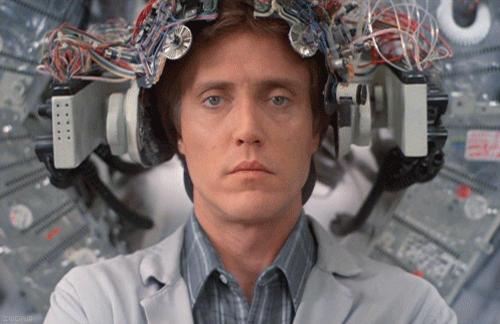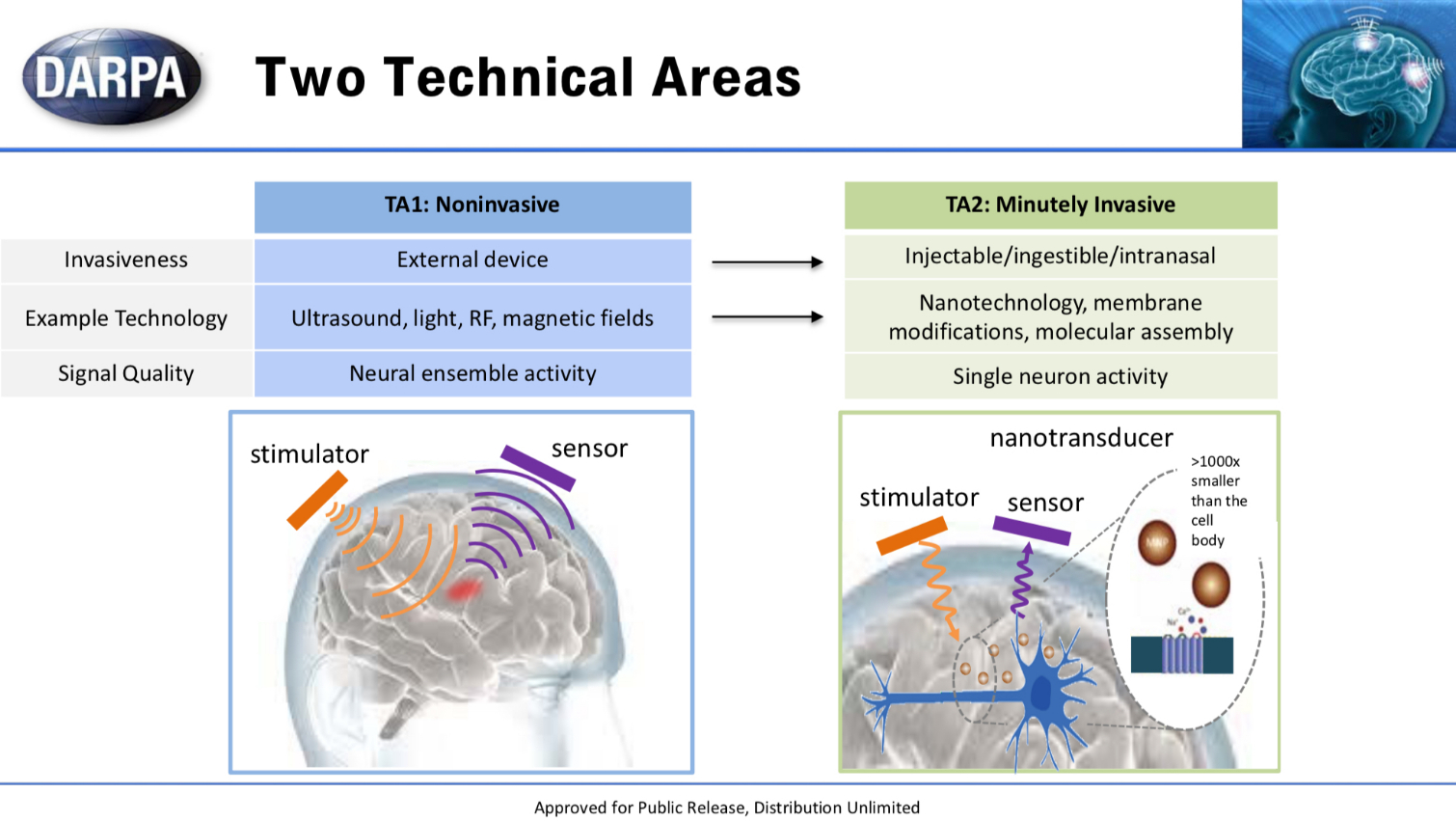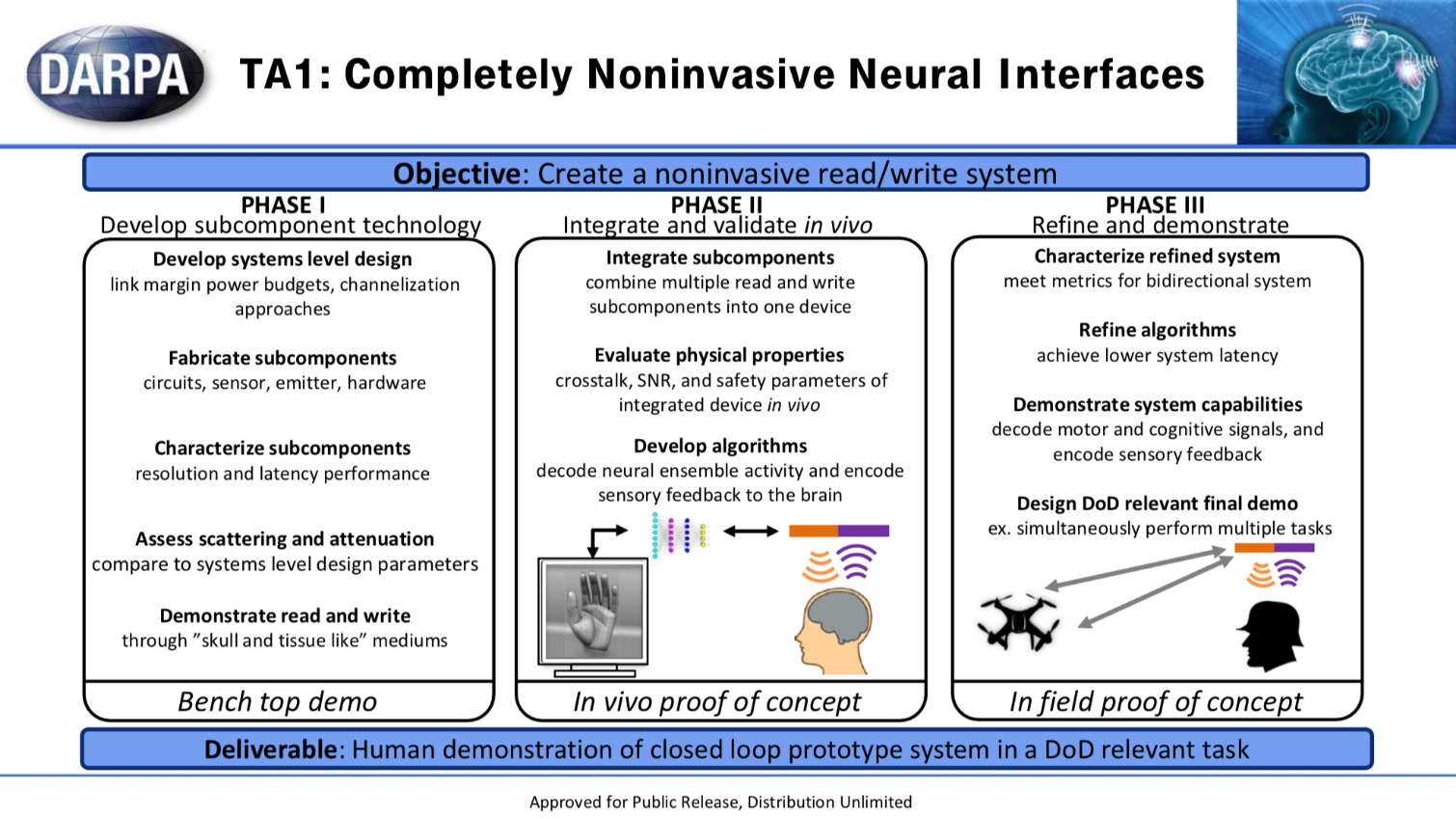US Military Developing Wireless Tech to Control Weapons With Your Mind
The new technology aims for soldiers to control machines with their mind but it will be a two-way street.
DARPA wants to wirelessly connect human brains to machines, allowing soldiers to fully control weapon systems, view things remotely like a Three-Eyed Raven, or feel stuff remotely.

Imagine the potential applications, not only for military control of airplanes and weapons, but also for civilian uses, from controlling artificial vision systems to completely immersive virtual reality systems that will transport your consciousness to alternate relatives.
It’s the stuff of science fiction, but scientists have already made some advances in the field. The first human neuroprosthetic devices appeared in the mid-1990s, allowing patients to crudely control artificial limbs. But those required surgical interventions. More experiments during the early 2010s showed that scientists could reconstruct people’s vision into digital video, but that’s far from being real time. Most recently, scientists at Carnegie Mellon University have figured out how to connect two brains, using a machine to transfer information wirelessly.
Now Darpa wants to take this nascent technology to its inevitable conclusion. According to the agency, the N3 project — Next-Generation Non-Surgical Neurotechnology — aims to “create reliable neural interfaces without the need for surgery or implanted electrodes.”

As DARPA says in its presentation, the technology has to be “read and write”, meaning that it will be bi-directional. It will not only be used for soldiers to control a drone swarm — one of the actual examples used by the Defense Advanced Research Projects Agency — but also put sensory information inside people’s brains, making them feel pressure or actually see things.
The latter scenario is actually something Rice University — one of the recipients of DARPA’s multi-million dollar funding for N3 — is working on: a system that will allow a blind person or anyone connected to it the vision of what other person is seeing. From there, the next step will be to emulate the brain activity to reproduce images taken with a digital camera.
In addition to Rice, the project will give millions of dollars to laboratories at Carnegie Mellon University, Johns Hopkins University, Palo Alto Research Center (where the graphic computer revolution started among many other things), Teledyne Scientific, and the Battelle Memorial Institute.
Get instant access to breaking news, the hottest reviews, great deals and helpful tips.
DARPA envisions two ways to make this happen. One is completely non-invasive — which will use something similar to a helmet, a diadem, or some other apparatus to transmit radio frequency waves that will transmit information into and out of the brain. They mention ultra-sound, light, RF, and magnetic fields. This system will include algorithms to decode and encode the brain’s motor and cognitive signals, affecting specific areas of the brain.

The target for the non-invasive technology is to have a closed system loop latency — the speed of which the entire system works in and out and in the brain — of 50 milliseconds, which is less than the speed of an eye blink. The document also mentions six degrees-of-freedom control of machines.
The other one is called “minutely invasive neural interfaces”, which will require the subject to get a substance inside their bodies, either orally, through a nasal spray or some other mechanism like injections. Rather than affecting areas of the brain, DARPA expects this to work at single neuron resolution, connecting to each neuron individually. The agency anticipates that this method could achieve ten degrees of freedom.
The document describes three phases, the first of 12 months (to establish the technological paths that need to be explored) and two of 18 months each. These will include animal and human testing.
For now, it’s just fun experiments but it’s inevitable to think about where this research could lead us a decade or two down the line. Or even before that: Elon Musk himself believes that machine-to-brain tech will connect your brain to computers sooner than what we imagine. But Musk’s company — called Neuralink — is working on surgery connections.
DARPA’s ambition goes way beyond that and it truly has the potential to change the world forever. If successful, and previous experiments show that there is a path for this to happen, DARPAS’s N3 project has wide and deep implications for both military and civilian uses.
Putting aside the moral and ethical implications that projects like this can bring if used for nefarious purposes, imagine what could be done with it — from enabling true cyborgs, helping people with disabilities and enhancing humans, to the most frivolous applications, like truly immersive gaming or experiencing other people’s recorded experiences (remember Brainstorm?) And of course, it opens a path to Matrix-like alternative realities. I can’t wait until we can experiment with this tech but then again, I’m sure I will instantly regret it.
Jesus Diaz founded the new Sploid for Gawker Media after seven years working at Gizmodo, where he helmed the lost-in-a-bar iPhone 4 story and wrote old angry man rants, among other things. He's a creative director, screenwriter, and producer at The Magic Sauce, and currently writes for Fast Company and Tom's Guide.

